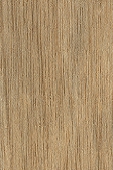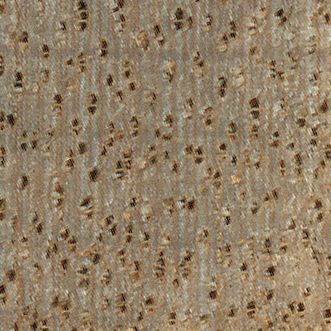
VIROLA (Virola surinamensis)
Trade Name
Virola
Scientific Name
Virola surinamensis (Rol. ex Rottb.) Warb.
Family
MYRISTICACEAE
Common Names
Yayamadou de marecage; Yamamadou; Yamadou; Wild nutmeg; Waroesi; Ucuuba branca; Ucuhuba; Quinquamadou; Nutlet; Muscadier c grive; Moussigot; Moulomba; Moonba; Mandalli; Light virola; Kilikowa; Guinguamadou; Dallie; Dalli; Cuajo; Couaie; Chalviande; Cedrillo; Camaticaro; Camala; Cajuca; Bicuhyba; Becuiba; Banak; Babun; Baboonhout; Baboon; Baboenoedoe; Baboenhout; Baboen; Andiroba; Anakin; Bicuiba (Brazil); Virola-Das-Ilhas (Brazil); Virola (Brazil); Ucuuba-Da-Várzea (Brazil); Ucuuba-Branca (Brazil); Ucuuba (Brazil); Bandarra (Brazil)
Scientific Name Synonyms
Myristica surinamensis Rol.
Description Of The Tree
Botanical Description
V. surinamensis is a medium size tree 25 m tall in the average, with diameters from to 60 to 70 cm, up to 100 cm. The boles are straight and cylindrical, up to 20 m long. It presents buttresses 1.5 m tall, sometimes pneumatophore roots are also reported.
Natural Habitat
Virola surinamensis is found in primary forests on swamps and inundated areas where it is reported to be a dominant species. It is cited as vulnerable in Brazil by the IBAMA. Vulnerable(IBAMA,2001)
Wood Identification
Anatomic Description Of Wood
Wood diffuse porous. Vessels solitary and in short radial multiples. Tangential diameter of vessel lumina 150 to 200 micras (medium). Vessels per mm2 10 to 20 (abundant). Vessels per mm2 less than 6 (rare). Simple perforation plates. Occasionally multiple perfo Axial parenchyma absent or extremely rare, non visible with magnifying glass (8x). Occasionally axial parenchyma in marginal or in seemingly marginal bands. 4 to 10 rays per mm (medium). Rays commonly 2 seriate. Heterogeneous rays and/or multiseriate heterogeneous rays. Body ray cells procumbent with over 4 rows of upright and/or square marginal cells (Kribs-I). Fibers with simple to minutely bordered pits.
-
 Wood Macro Photo Tangential Plane
Wood Macro Photo Tangential Plane
-
 Wood Micro Photo Of Transversal Section
Wood Micro Photo Of Transversal Section
Availability
Cites Status
Unrestricted
General Wood Description
Odor
Odor and taste are reported to be indistinct.
Color
The heartwood is light beige or slightly pinkish to dark brown and sapwood lighter than heartwood.
COLOR INDEX (1=Black, 7=Light yellow,white)
5
Grain
Straight grain is reported in this species.
Texture
This wood has a somewhat medium texture.
Natural Durability
It has very little or no natural resistance to decay or insect attack.
Natural durability index (1= Very high durability, 7=Vey low durability)
5
Resistance To Impregnation
This species is reported to be easy to preserve.
Wood Physical Properties
Basic Density or Specific Gravity (O.D. weight/vol. green) (g/cm³)
0.42
Air-dry Density (Weight and volume at 12%MC) (g/cm³)
0.45
Total shrinkage Tangential (Saturated to 0%MC) (%)
12.4
Total shrinkage Radial (Saturated to 0%MC) (%)
5.3
Drying Defects
Ease of Drying: Air drying is rated as moderate. Drying Defects: Slight risk of warping and checking.
Recommended Dry Kiln Schedule
UK-C; US-T3-C2
Dimensional stability ratio (Total Tangential Shrinkage %/Total Radial Shrinkage %)
2.3
Wood Chemical Properties
Wood Mechanical Properties
Bending Strength (MOR),12%MC (kgf/cm²)
766
Stiffness (MOE) 12%MC (kgf/cm²)
143000
Compression parallel to fiber 12%MC (kgf/cm²)
360
Compression perpendicular to fiber 12%MC (kgf/cm²)
19
Shear strength radial 12%MC (kgf/cm²)
69
Janka hardness (side) 12%MC (kgf)
231
Janka hardness (end grain) 12%MC (kgf)
254
Workability
Sawing
This species is easy to saw.
Rotary Veneer Cutting
This species is reported to have good characteristics for lamination.
Sliced Veneer
This species is reported to have good characteristics for lamination.
Planing
Planing operations are rather easy.
Boring
Boring of this species is reported to be easy.
Sanding
Sanding of this species is reportedly easy.
Finishing
This species is reported to be easy to finish.
Response To Hand Tools
This species is reported to be easy to work with hand tools.
REFERENCED USES
End Uses Summary
HOUSING GENERAL, boards, panelling, FURNITURE AND CABINETS, common furniture, PLYWOOD AND VENEER, faces, common veneer, BENDING, tennis rackets, SPORTS, table tennis, PACKING, light packing, OTHER AND MUSICAL INSTRUMENTS, handicrafts, pencil, matches, door core
General Housing
- 10 - Silica in Timbers
Boards
- 13 - Dry kiln schedules for commercial woods. Temperate and tropical. Section III. Latin American (Mexico, Central, and South America) Woods–Conventional Temperatures
Paneling
- 18 - W3TROPICOS Missouri Botanical Garden
Furniture Cabinets
- 21 - Tropical timbers of the world. Part III-Southeast Asian and Oceanian Species.
Furniture, Common
- 23 - Handbook of Hardwoods
Panels, Veneers
- 25 - Directory of Timber Trade Malaysia
Faces
- 26 - Annual Review and Assessment of the World Timber Situation 1998-ITTO
Common Veneer
- 29 - Embassy of Ecuador in Japan
Bending
- 35 - Embassy of Myanmar in Japan
Tennis Rackets
- 37 - Annual Review and Assessment of the World Timber Situation 1998-ITTO
Sports
- 38 - Annual Review and Assessment of the World Timber Situation 1998-ITTO
- 41 - Embassy of the Philippines
Packing
- 45 - Recopilación y Análisis de Estudios Tecnológicos de Maderas Peruanas
Light Packing
- 46 - ECUADOR, Inventario y Aprovechamiento de los Bosques del Sur Ecuatoriano
Handcraft
- 66 - Maderas latinoamericanas. VII. Caracteristicas anatomicas. propiedades fisicomecanicas, de secado, y tratabilidad de la madera juvenil de Cordia alliodora (Ruiz & Pav. Oken.)
Pencils
- 67 - Maderas latinoamericanas. VIII, Calophyllum brasilense, Couratari panamensis, Dendropanax arboreum y Bombacopsis sessilis
Matches
- 71 - Proprietes physiques et mecaniques des bois tropicaux, premier supplement
Door Cores
- 76 - Descripción General y Anatómica de 105 Maderas del Grupo Andino.
Please Provide Information To View Producer Information